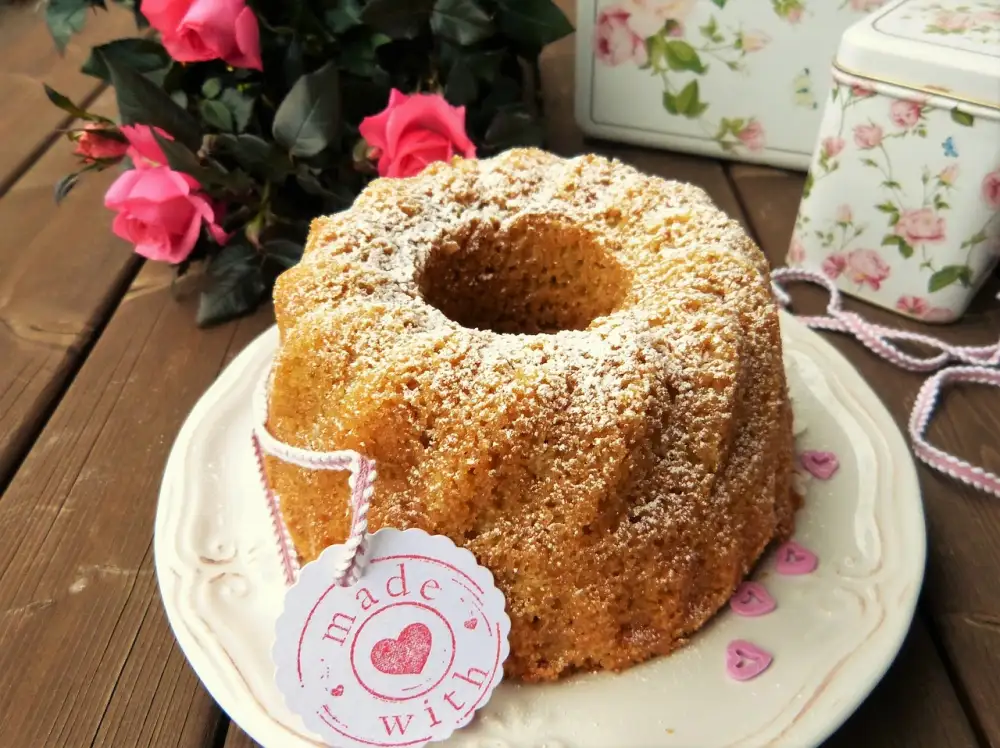Discover the Health Benefits of Gluten-Free Flour: A Delicious Alternative for a Gluten-Free Lifestyle

In recent years, there has been a surge in the popularity of gluten-free diets and products. Gluten, a protein found in wheat, barley, and rye, can cause adverse health effects for those with celiac disease or gluten sensitivity. As a result, many individuals are turning to gluten-free alternatives to enjoy their favorite foods without compromising their well-being.
One such alternative is gluten-free flour. This versatile ingredient allows people to create delicious dishes while avoiding the harmful effects of gluten. Whether you have dietary restrictions or simply want to explore new culinary possibilities, gluten-free flour offers an exciting solution for a healthier lifestyle. Let's delve deeper into the world of gluten-free flour and discover its numerous benefits.
Understanding gluten and its effects on health
Gluten is a protein found in wheat, barley, and rye. For individuals with celiac disease or gluten sensitivity, consuming gluten can lead to various health issues. Celiac disease is an autoimmune disorder where the ingestion of gluten causes damage to the small intestine. This can result in nutrient deficiencies, digestive problems, and other complications.
Even for those without celiac disease or gluten sensitivity, gluten can still have negative effects on health. It has been linked to inflammation in the body, which can contribute to conditions like arthritis and inflammatory bowel disease. Additionally, some studies suggest that reducing or eliminating gluten from the diet may help alleviate symptoms of certain neurological disorders such as autism and ADHD.
By understanding the potential impact of gluten on our health, we can make informed choices about our diets and explore alternatives like gluten-free flour that offer a delicious way to embrace a healthier lifestyle.
Benefits of using gluten-free flour
Using gluten-free flour offers a multitude of benefits for those with gluten sensitivities or celiac disease. Firstly, it allows individuals to enjoy their favorite baked goods without the discomfort and health issues associated with consuming gluten. Secondly, gluten-free flour can improve digestion and gut health by reducing inflammation in the digestive system. Additionally, it promotes weight management as it tends to have fewer calories and less fat than traditional wheat flour. Lastly, using gluten-free flour opens up a world of culinary possibilities for those following a gluten-free lifestyle, allowing them to explore new flavors and textures in their cooking and baking endeavors.
Types of gluten-free flours available in the market
There are several types of gluten-free flours available in the market today, providing a wide range of options for those following a gluten-free lifestyle. Some popular choices include almond flour, coconut flour, rice flour, tapioca flour, and sorghum flour. Each type of flour has its own unique flavor and texture, making them suitable for different recipes. Experimenting with these various flours can help add variety to your gluten-free cooking and baking.
Nutritional value and versatility of gluten-free flour
Gluten-free flour is not only a great alternative for those with gluten sensitivities or celiac disease, but it also offers a range of nutritional benefits. Many gluten-free flours are made from nutrient-dense ingredients like almond, coconut, quinoa, and chickpeas, providing essential vitamins, minerals, and fiber. These flours are also versatile and can be used in various recipes such as breads, cakes, cookies, and even savory dishes. With gluten-free flour, you can enjoy delicious meals while nourishing your body with wholesome ingredients.
Tips for baking with gluten-free flour
When baking with gluten-free flour, it's important to keep a few tips in mind to ensure successful results. Firstly, it's crucial to measure the flour accurately using a kitchen scale rather than relying on volume measurements. Gluten-free flours can vary in density, so precise measurements are key.
Additionally, it's beneficial to use a blend of gluten-free flours rather than relying on just one type. This combination helps to mimic the texture and flavor of traditional wheat flour. Common blends include rice flour, tapioca starch, and potato starch.
To improve the structure and texture of baked goods, consider adding xanthan gum or guar gum to your recipes. These binders help replace the elasticity that gluten provides.
It's also important to be mindful of the liquid content in your recipes. Gluten-free flours tend to absorb more moisture than regular flour, so you may need to increase the amount of liquid or add additional eggs or oil.
Lastly, be patient when working with gluten-free doughs as they may require longer resting times for optimal results. This allows the flours to fully hydrate and develop their flavors.
By following these tips, you can confidently create delicious baked goods using gluten-free flour while still achieving great taste and texture.
Addressing common misconceptions about gluten-free flour
There are several misconceptions surrounding gluten-free flour that need to be addressed. One of the most common misconceptions is that gluten-free flour lacks flavor and texture. However, with the advancements in food technology, gluten-free flours now come in a wide variety of options that can mimic the taste and texture of traditional wheat flour.
Another misconception is that gluten-free flour is only for those with celiac disease or gluten sensitivity. While it is true that individuals with these conditions must avoid gluten, anyone can benefit from incorporating gluten-free flour into their diet. It offers a healthier alternative for those looking to reduce their intake of processed foods and improve their overall well-being.
Additionally, some people believe that baking with gluten-free flour is difficult and requires special skills. While it may take some practice to get accustomed to working with different textures and ratios, there are plenty of resources available, such as recipes and tips, to help make the transition easier.
Lastly, there is a misconception that gluten-free flours are expensive and hard to find. While certain specialty flours may be pricier, there are affordable options readily available in most grocery stores. Many mainstream brands now offer their own line of gluten-free flours, making them accessible to a wider range of consumers.
It's important to dispel these misconceptions so that more people can embrace the health benefits of gluten-free flour without hesitation or doubt. By understanding the versatility and nutritional value it offers, individuals can confidently incorporate this delicious alternative into their everyday cooking and baking routines.
In conclusion, embracing the health benefits of gluten-free flour is a delicious and nutritious choice for those living a gluten-free lifestyle. By understanding the effects of gluten on our health and opting for gluten-free alternatives, we can improve digestion, reduce inflammation, and support overall well-being. With a wide variety of gluten-free flours available in the market, there are endless possibilities for creating flavorful and satisfying dishes. So why not give it a try? Start exploring the world of gluten-free flour today and discover a whole new level of culinary creativity while nourishing your body.
Published: 09. 12. 2023
Category: Health



